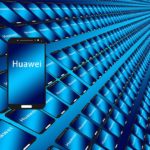5G Networks are ready for worldwide commercialization, powered by Chinese Technology | Daxue Consulting
Technology and communication companies all around the world have been immersed in technological advancements to be the first to develop and commercialize 5G technology and networks. In other words, ‘a race to 5G.’ 5G is the fifth generation cellular mobile network that will make possible the things in which 4G networks did not and further develop the things in which it did– high definition (HD) and fast mobile internet connectivity. With the development of 5G, great advancements in technologies such as artificial intelligence (AI) robots, self-driving cars, smart factors, and many more, will be fostered and achieved. Currently leading the race is China, as telecommunications equipment company Huawei has become the first to complete all pre-screening tests and verification for the commercialization of 5G.
Huawei launches successful simplified 5G solution
In February at the 2019 Mobile World Congress (MWC), Huawei released a full-scenario 5G commercial system that provides what the company calls a “simplified 5G solution” along with 5G phones and a line of cloud core network products. The Simplified 5G Solution is designed to help operators build 5G networks with ultimate experience and usability, along with low deployment costs and low power consumption. Throughout 2018, Huawei has partnered up with worldwide operators such as Vodafone (Spain), Sunrise (Switzerland), LG (South Korea), and NTT DOCOMO (Japan) for testing and verification of many 5G products and technology. By the end of 2018, all testing and verification were completed, green-lighting the simplified 5G solution as ready for commercialization. At MWC 2019, Huawei also demonstrated the world’s first multi-operator 5G call, 8K high-definition (8K HD) live streaming, and new applications such as Cloud VR and Cloud gaming. About 25,000 5G base stations have been shipped globally, and 30 commercial contracts with operators have been signed as well.
End-to-End simplification and integration
The simplified 5G solution is comprised of network simplification, simplified architecture, a simplified site, and simplified operations and maintenance (O&M). These factors allow for 5G networks to be deployed easily on a large scale. The end-to-end set-up ensures that the solution will function as it was designed to function.
Can Huawei’s Simplified 5G Solution give consumers what they want after 4G networks?
After the release of 4G networks, which brought 4K Televisions, LTE (long-term evolution) networks, and enabled large data streaming, users were left wanting faster connectivity, faster browsing, better quality video calls, ultra high-definition (Ultra HD), 360-degree video streaming, and instant cloud access, etc. Huawei’s simplified 5G solution will be able to give them some of the things in which they want. The solution provides faster speeds, faster connectivity, and quicker access to the cloud. Faster speeds are achieved by traveling over super-high-frequency airwaves providing more broadband width. Faster connectivity is made possible by zero latency, which reduces lag time between devices and services. For faster access to the cloud, the simplified 5G solution acts as a cloud server and performances computing and data storage bringing data closer to the devices for quick and easy access.
The technology behind 5G products and solutions
Key factors to the simplified 5G solution are the end-to-end core chip, Huawei TIANGANG, and a base station. Huawei TIANGANG is an e2e chip that is highly integrated, meaning it can support large-scale combining of an active power amplifier (PAs) and passive antenna arrays into tiny antennas. It also holds super high computing capacity such that up to 64 channels can be controlled by each chip. Other features of the chip include active antenna units (AAUs) being smaller and lighter and being able to support simplified 5G-networks and large-scale 5G-network deployment all over the world. The base station or cell tower with antenna units, that holds the core chip uses a blade form factor, and different modules can combine as needed, allowing installation to be simple and easy. It can be deployed in half the time it takes to install a 4G base station.
CONTACT US NOW TO ANSWER YOUR QUESTIONS ABOUT BUSINESS IN CHINA
Simplified 5G Site allows for worldwide usage and ultimate performance
The simplified 5G solution allows for a simplified site. This is due to the solution being designed to be diverse in deployment with e2e chips supporting all kinds of networks and all bands (e.g., C band, 3G, 2G, etc.). This allows for users to access the best wireless services.
5G Connectivity
Along with the simplified 5G solution, Huawei released the ‘Cloud X’ business model of smart terminals and cloud appliances. The ‘X’ can stand for three forms of technology: pc, gaming, and AR/VR. Cloud PC is a cloud hosting service that can work as a mobile base station or gaming host, all based on 5G. Cloud Gaming replaces local gaming hosts with cloud-based gaming hosts. Cloud AR/VR applies rendering and computing on the cloud with 5G being required after rendering for user experience.
As Huawei prepares to release its 5G products on the market later in 2019, other companies and industries are preparing to utilize the commercialization of 5G. Sunrise (Switzerland) plans to release their 5G network using Huawei’s simplified 5G solution sometime this month. South African mobile network operator Rain, in partnership with Huawei, has released the first 5G commercial network in Africa. In China’s car industry, automaker Zhejiang Geely Holding Group plans to mass-produce a line of intelligent-connected vehicles using 5G networks and C-V2X technology readied for release into the automobile market as early as 2021.
What does Huawei’s success mean for China?
Huawei’s success enables China to become the leader, and one step closer, in technological advancements of smart factors, artificial intelligence (AI) robots, and improvements in the auto industry such as advancements in self-driving cars. For self-driving cars, 5G networks could serve as a cloud server that is able to do the computing and data storage that the car would have had to do.
Daxue Consulting helps you get the best of the Chinese market
Do not hesitate to reach out to our project managers at dx@daxueconsulting.com to get all answers to your questions.















